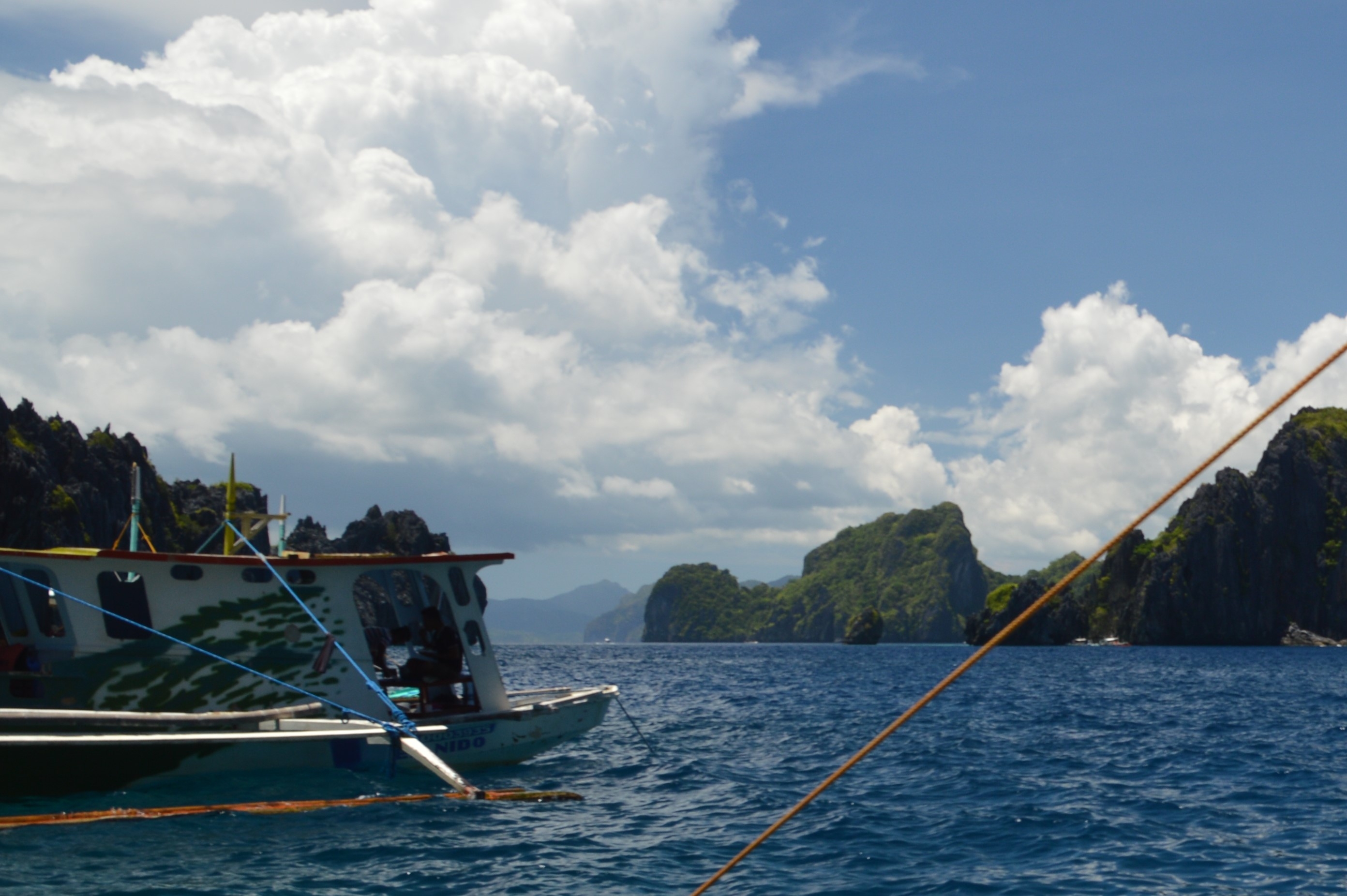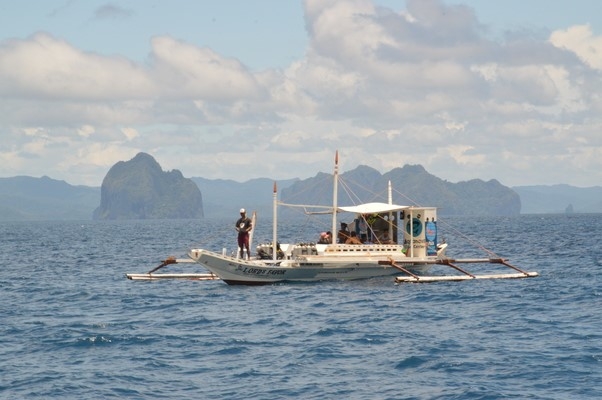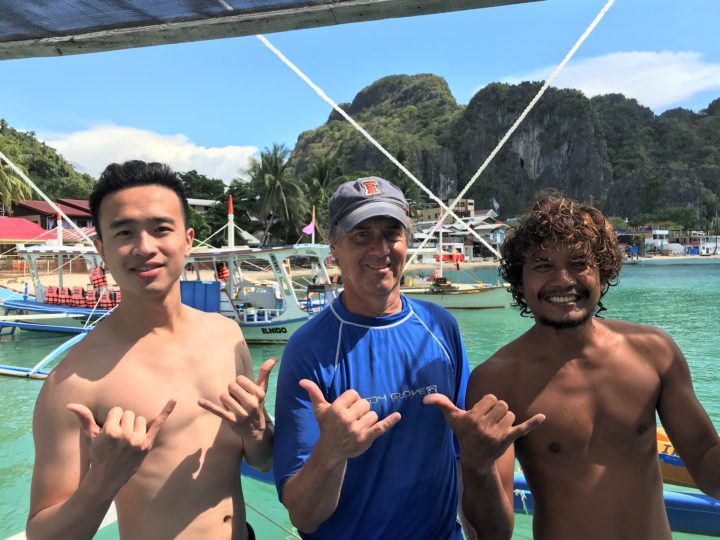The deep dive of the day is in a channel between two islands. A low-pressure system has passed through overnight. The water is choppy and the current strong. The dive starts along the cliff edge, follows the channel to where it narrows, then we are to swim out of the channel behind the backside of the pinch point of the channel behind a cliff into calmer waters to return to the
The first part of the dive is more or less floating along with the current along the wall of the cliff that dives deep into the water. As the current pushes us out into the lane, I can hear the

The second part of the dive is swimming back against the current to reach the relative calm of the backside. JJ, the dive master, points down, later explaining that there is less current closer to the bottom. I tried to swim down at the time but easier said than done. When I check my tank, I’m at the 10 psi mark, the half tank point, so I check in with JJ as instructed. We turn around to check on Tin, my recently certified, Chinese dive buddy for the day who fixes elevators in Hong Kong. He is nowhere in sight. JJ shoots back into the murky water like a spooked dolphin. I’ve grabbed ahold of the rim of a three or four-foot tall sponge-like thing to hold my position and wait. I’m down to five PSI, the redline on the tank. I’m wondering at what point do I go for the surface. Am I in the boat lane? I would sure hate to lose my head to a bangka boat.
A couple of minutes later, about fifty feet back and above the murk in the brightness near the surface, I see Tin, a few feet from the surface in the boat lane trying to let the air out of his BC. JJ is pulling him down back into the murk. Moments later, they re-emerge out of the murk. JJ is towing Tin at his side, crawling along the bottom pulling himself forward, one piece of coral at a time. I see Tin’s
Running out of
Tin asks me if I’ve ever had a bad experience before. My story of Phil’s seasick misadventure in the kelp helps calm some nerves and give a few laughs, but that definitely goes down as a bad dive and the only time I remember being underwater by myself in dangerous conditions. For diving, I’d much rather have experiences than stories. And I for one am glad that the elevators of Hong Kong will continue to run smoothly.

